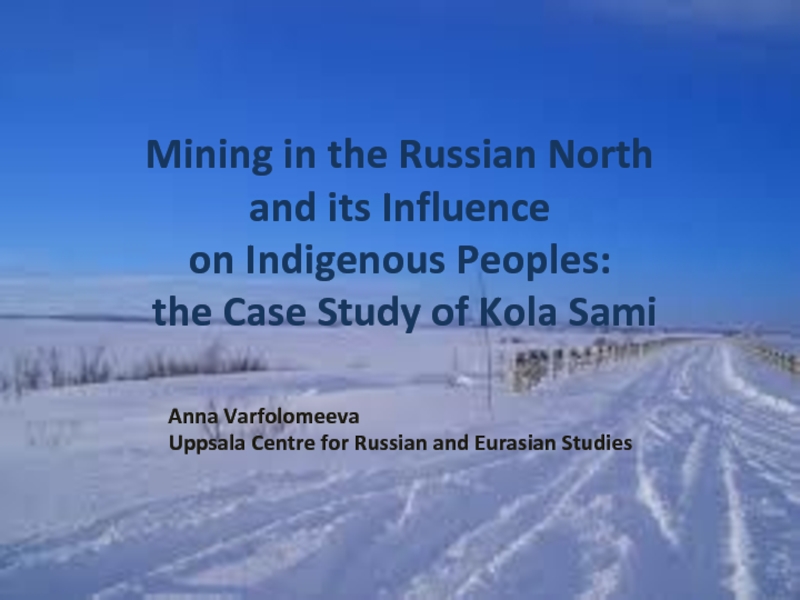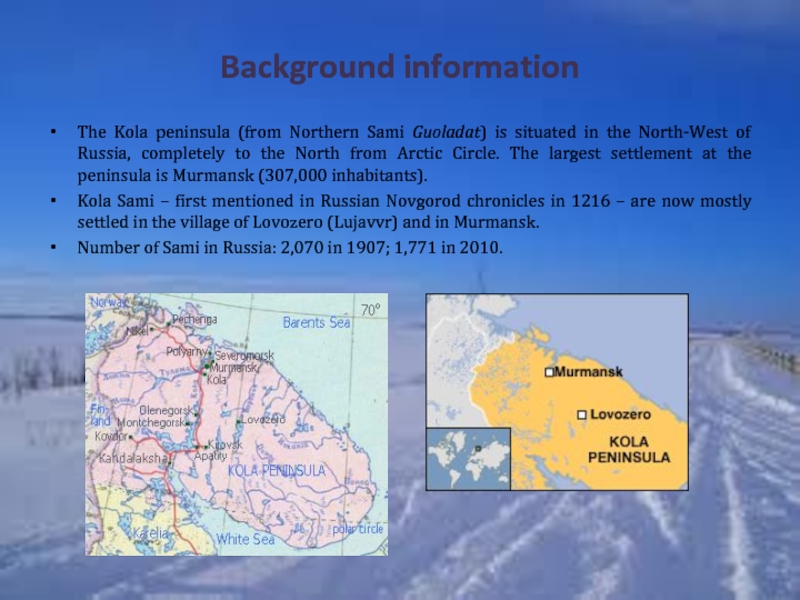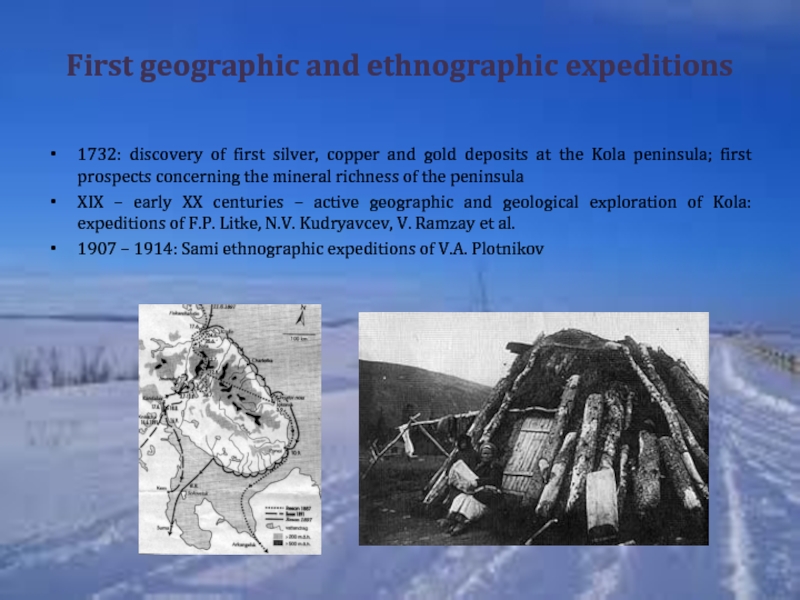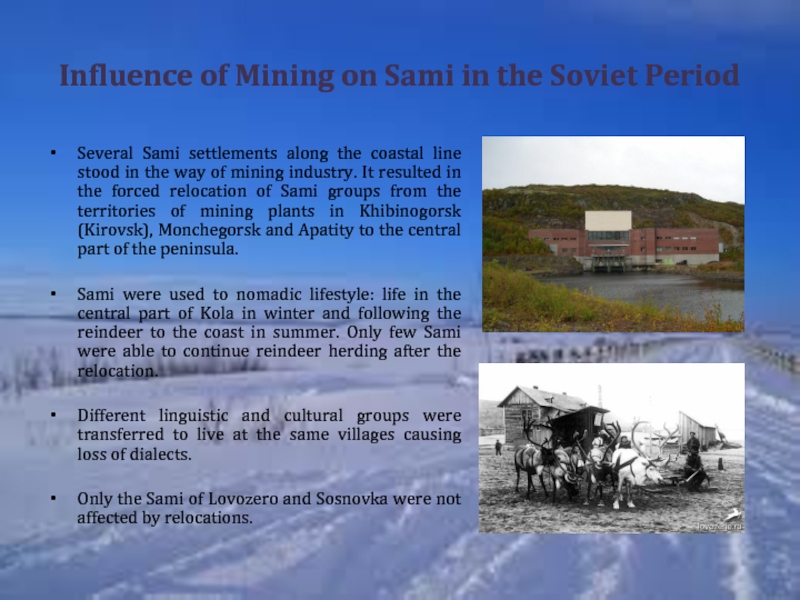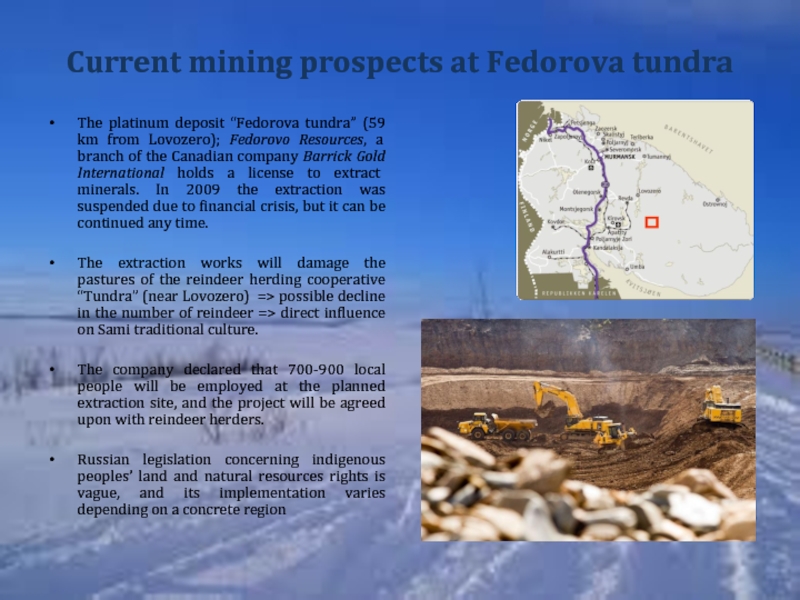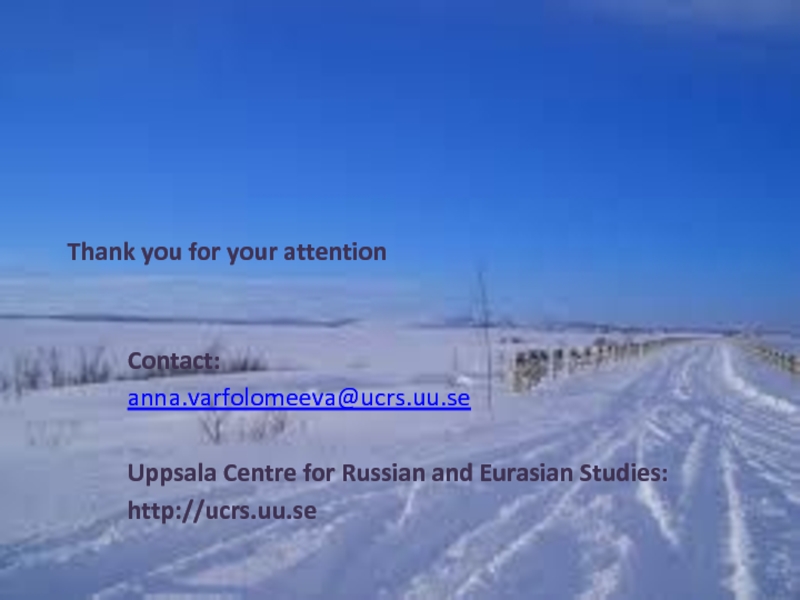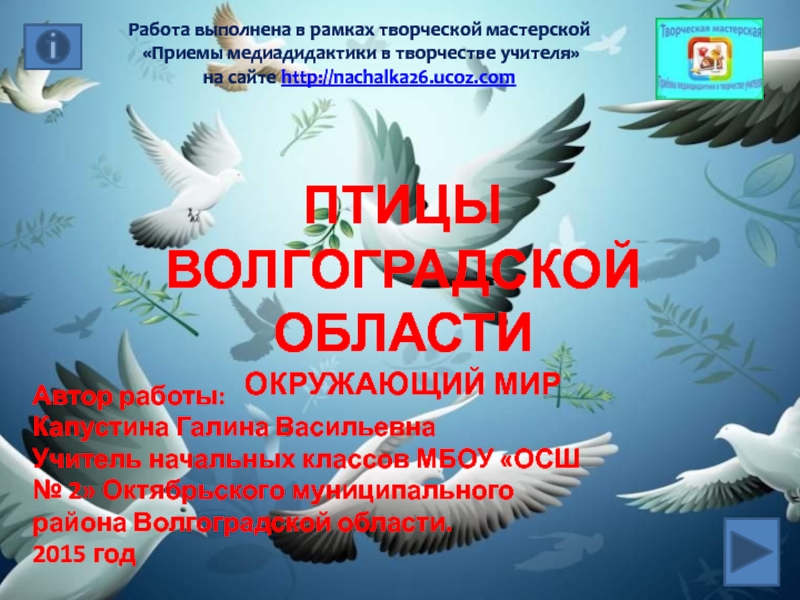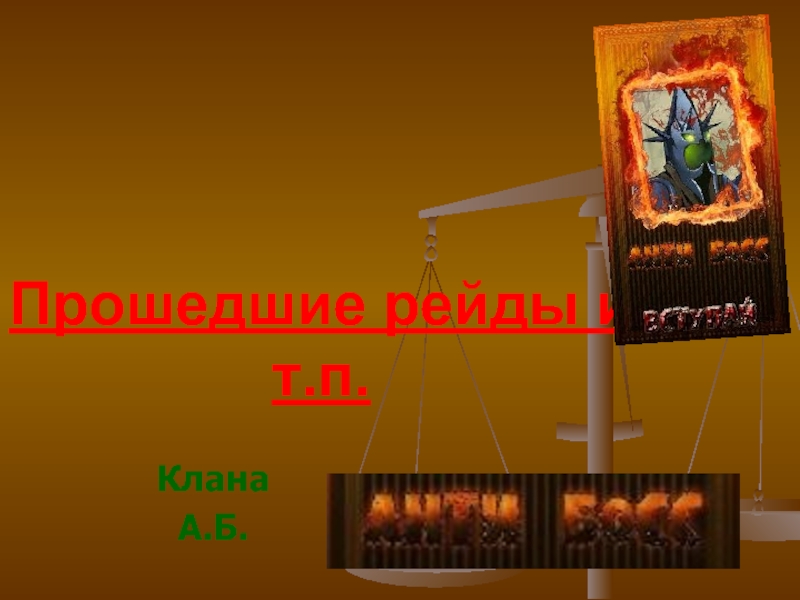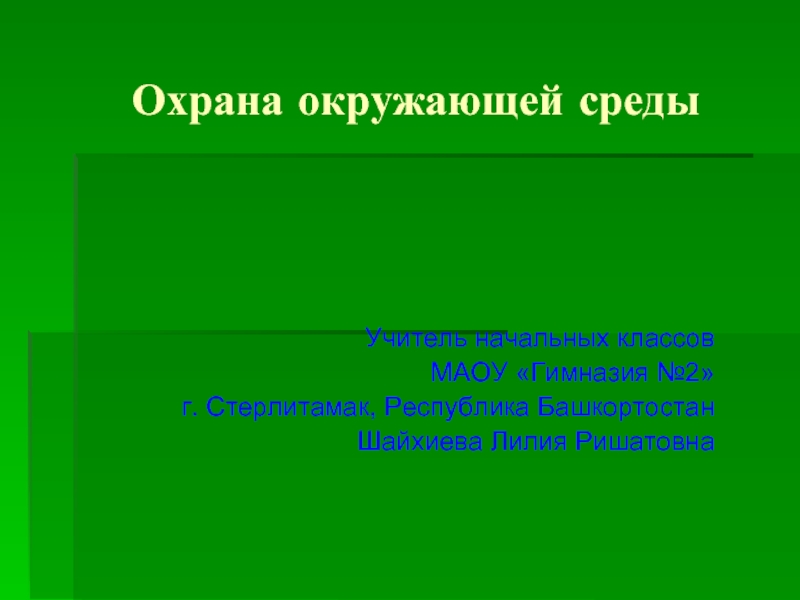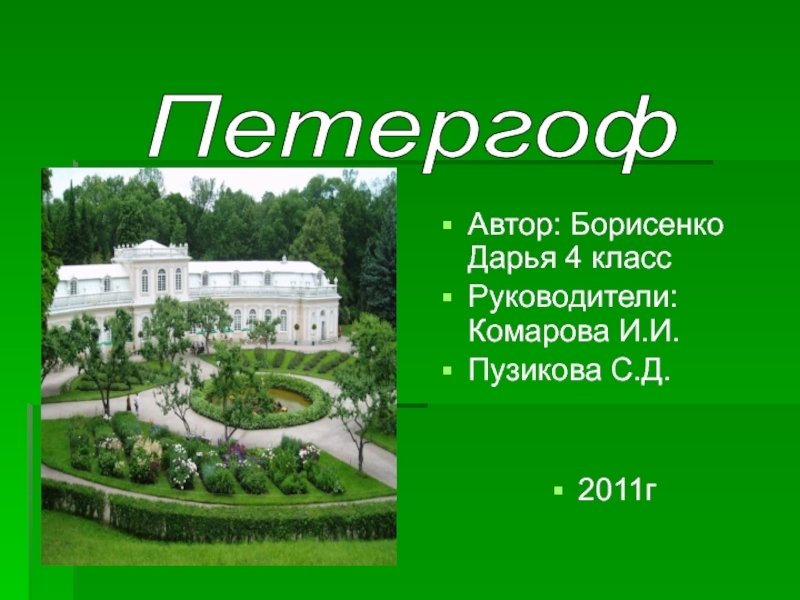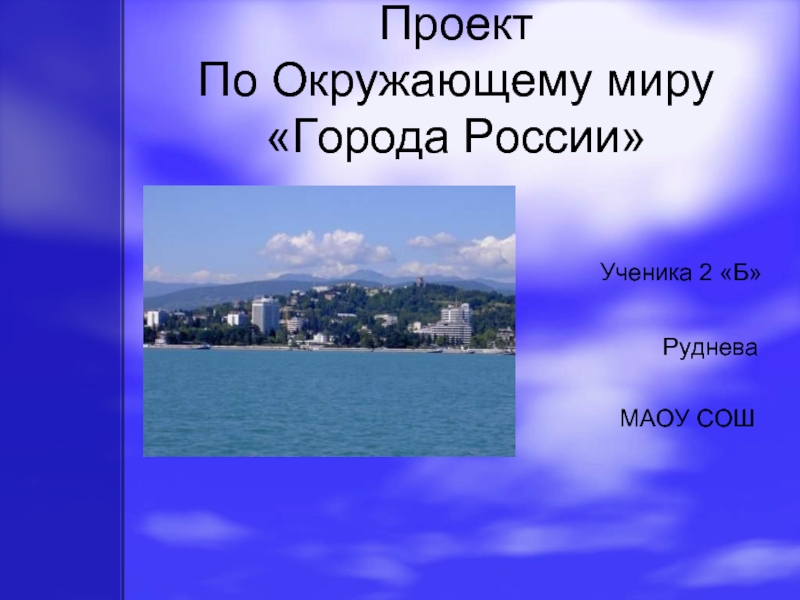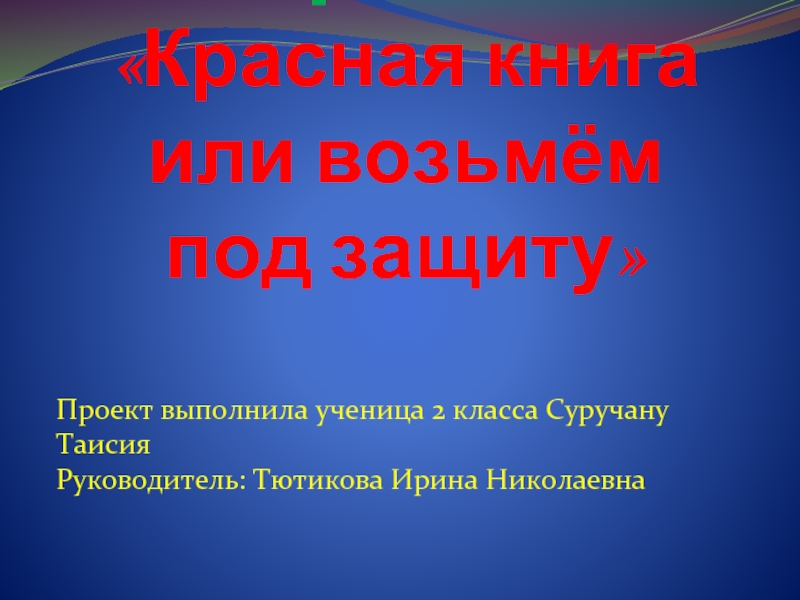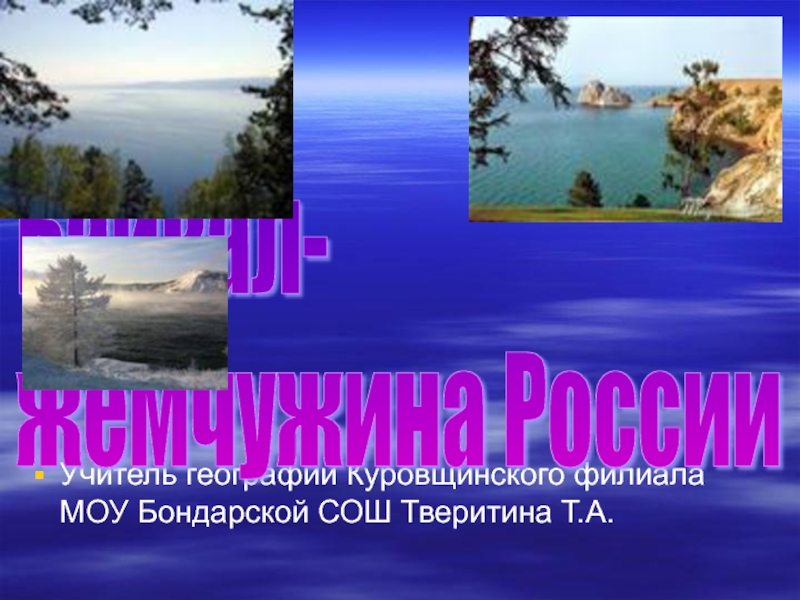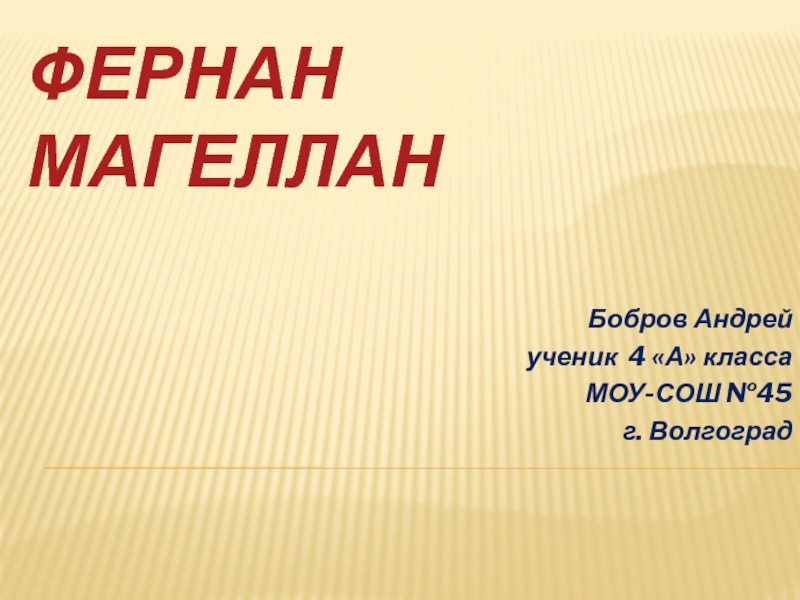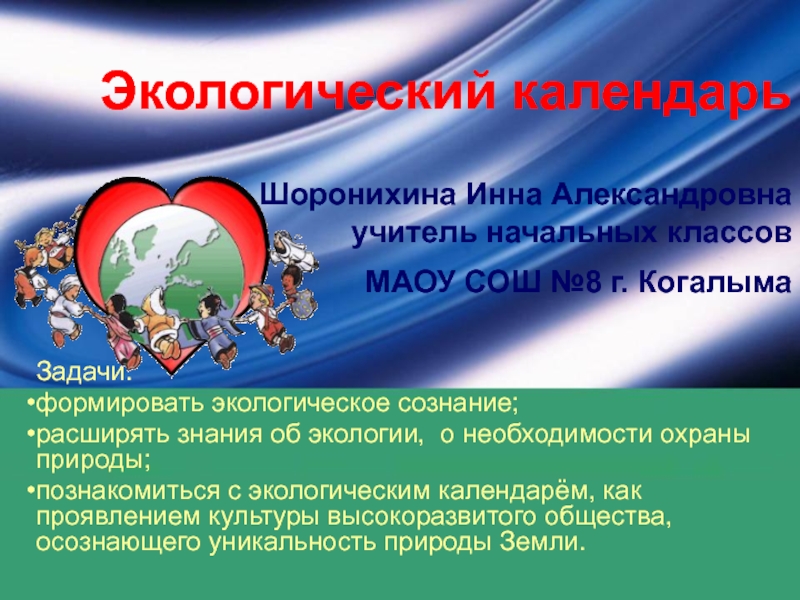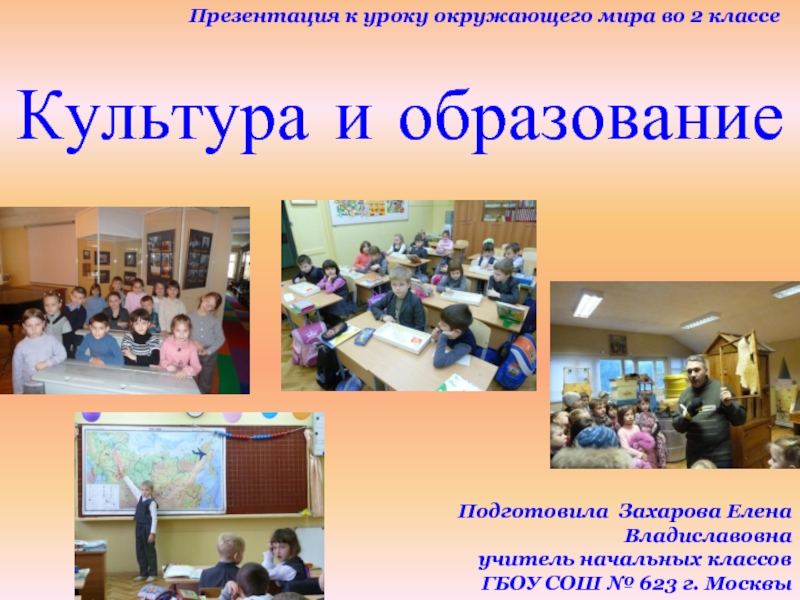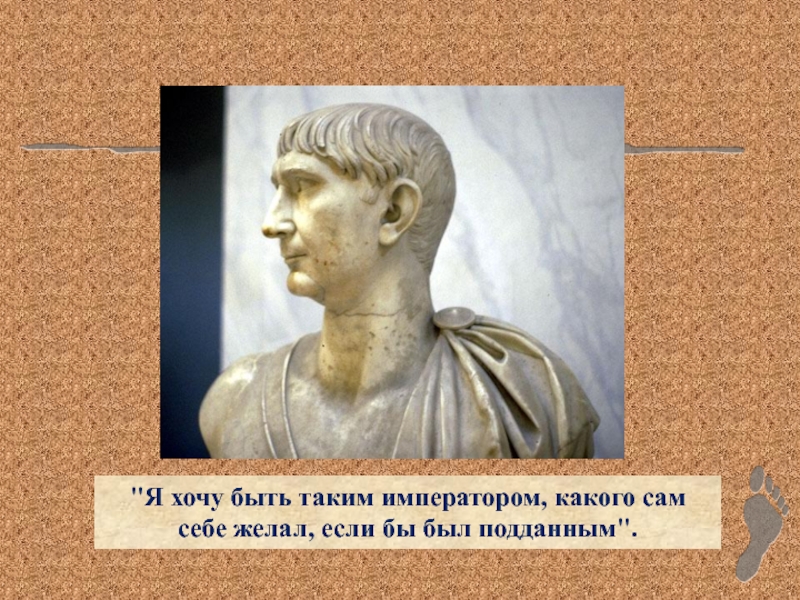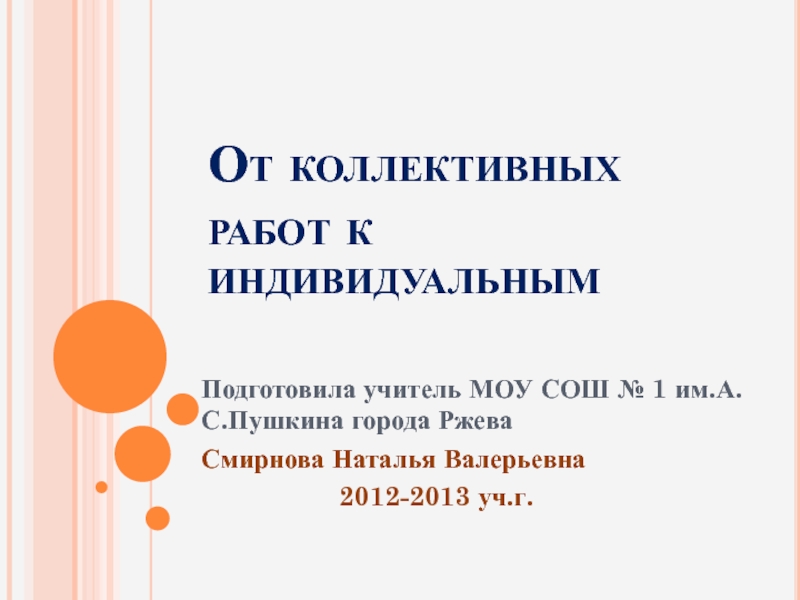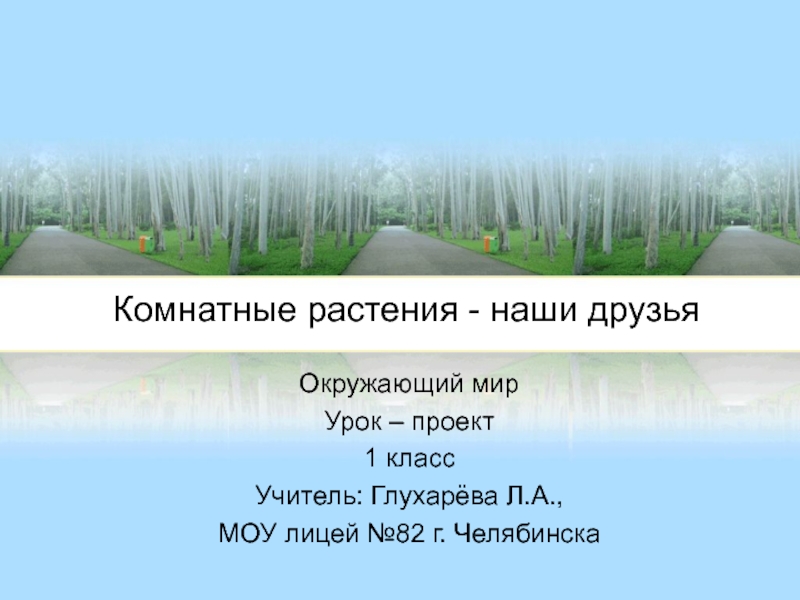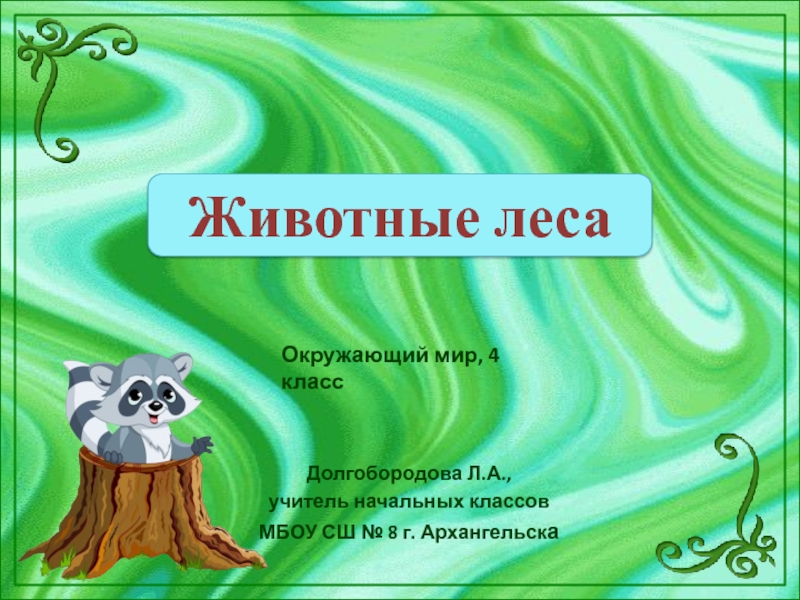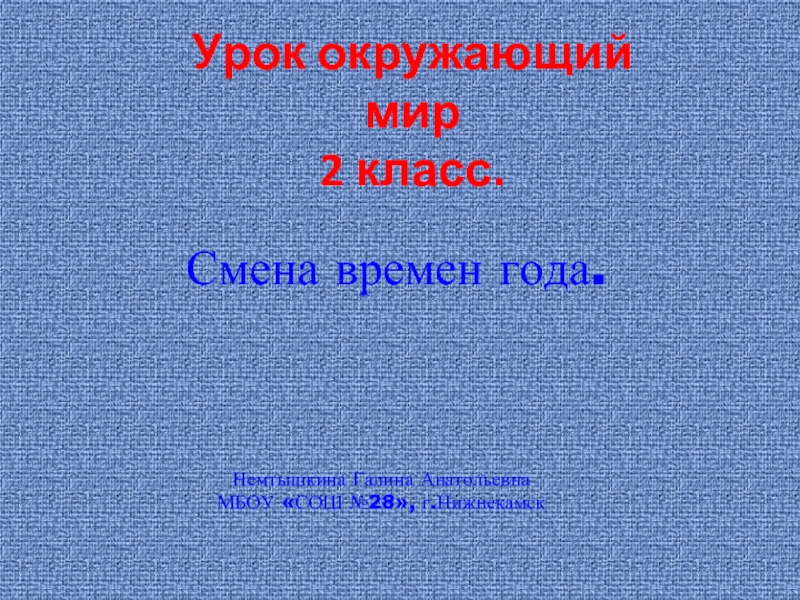Разделы презентаций
- Разное
- Английский язык
- Астрономия
- Алгебра
- Биология
- География
- Геометрия
- Детские презентации
- Информатика
- История
- Литература
- Математика
- Медицина
- Менеджмент
- Музыка
- МХК
- Немецкий язык
- ОБЖ
- Обществознание
- Окружающий мир
- Педагогика
- Русский язык
- Технология
- Физика
- Философия
- Химия
- Шаблоны, картинки для презентаций
- Экология
- Экономика
- Юриспруденция
Mining in the Russian North and its Influence on Indigenous Peoples: the Case Study of Kola Sami
Содержание
- 1. Mining in the Russian North and its Influence on Indigenous Peoples: the Case Study of Kola Sami
- 2. Background informationThe Kola peninsula (from Northern Sami
- 3. First geographic and ethnographic expeditions1732: discovery of
- 4. Mining at Kola Peninsula in the Soviet
- 5. Influence of Mining on Sami in the
- 6. Current mining prospects at Fedorova tundraThe platinum
- 7. Thank you for your attentionContact: anna.varfolomeeva@ucrs.uu.seUppsala Centre for Russian and Eurasian Studies:http://ucrs.uu.se
- 8. Скачать презентанцию
Background informationThe Kola peninsula (from Northern Sami Guoladat) is situated in the North-West of Russia, completely to the North from Arctic Circle. The largest settlement at the peninsula is Murmansk (307,000
Слайды и текст этой презентации
Слайд 1 Mining in the Russian North and its Influence on Indigenous
Peoples:
the Case Study of Kola Sami
for Russian and Eurasian StudiesСлайд 2Background information
The Kola peninsula (from Northern Sami Guoladat) is situated
in the North-West of Russia, completely to the North from
Arctic Circle. The largest settlement at the peninsula is Murmansk (307,000 inhabitants).Kola Sami – first mentioned in Russian Novgorod chronicles in 1216 – are now mostly settled in the village of Lovozero (Lujavvr) and in Murmansk.
Number of Sami in Russia: 2,070 in 1907; 1,771 in 2010.
Слайд 3First geographic and ethnographic expeditions
1732: discovery of first silver, copper
and gold deposits at the Kola peninsula; first prospects concerning
the mineral richness of the peninsulaXIX – early XX centuries – active geographic and geological exploration of Kola: expeditions of F.P. Litke, N.V. Kudryavcev, V. Ramzay et al.
1907 – 1914: Sami ethnographic expeditions of V.A. Plotnikov
Слайд 4Mining at Kola Peninsula in the Soviet Times
Already in the
the first post-revolutionary years the importance of Arctic exploration is
stated. The romantic image of Arctic is cultivated: the land of challenge and new opportunities.New deposits discovered: apatite (1920-1930), kyanite (1932-1939), titanium (1935), olivinite (1935), iron (1940), glist, pyrrhotine, copper-nickel
49 types of minerals were discovered in the period of 1920-1940
1920s – 1930s – first industrial plants at Kola Peninsula: mining and chemical plant “Apatite” (1929), copper – nickel plant “Severonickel” (1935).
New cities appeared in tundra due to mining development; thousands of people were transferred there from other Russian regions.
Слайд 5Influence of Mining on Sami in the Soviet Period
Several Sami
settlements along the coastal line stood in the way of
mining industry. It resulted in the forced relocation of Sami groups from the territories of mining plants in Khibinogorsk (Kirovsk), Monchegorsk and Apatity to the central part of the peninsula.Sami were used to nomadic lifestyle: life in the central part of Kola in winter and following the reindeer to the coast in summer. Only few Sami were able to continue reindeer herding after the relocation.
Different linguistic and cultural groups were transferred to live at the same villages causing loss of dialects.
Only the Sami of Lovozero and Sosnovka were not affected by relocations.
Слайд 6Current mining prospects at Fedorova tundra
The platinum deposit “Fedorova tundra”
(59 km from Lovozero); Fedorovo Resources, a branch of the
Canadian company Barrick Gold International holds a license to extract minerals. In 2009 the extraction was suspended due to financial crisis, but it can be continued any time.The extraction works will damage the pastures of the reindeer herding cooperative “Tundra” (near Lovozero) => possible decline in the number of reindeer => direct influence on Sami traditional culture.
The company declared that 700-900 local people will be employed at the planned extraction site, and the project will be agreed upon with reindeer herders.
Russian legislation concerning indigenous peoples’ land and natural resources rights is vague, and its implementation varies depending on a concrete region
